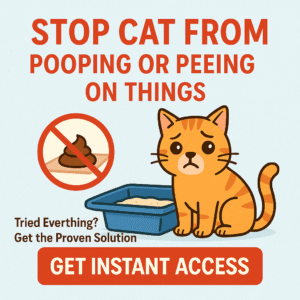Whether playful or unintended, a cat scratch can sting—and sometimes cause complications. But with the right response and mindset, you can ensure quick healing and even deepen your bond with your feline friend. In this comprehensive guide, you’ll discover how to treat scratches, prevent future ones, understand cat behavior, and build healthier interactions—all while reinforcing routines that the Cat Spray No More ebook encourages.
Why Cats Scratch Humans
Cats don’t scratch to hurt—they use their claws as communication, protection, or grooming tools. Reasons include:
- Play aggression: Kittens and young cats often get carried away during play.
- Fear or self-defense: Scratching can be a reflexive response to feeling trapped or threatened.
- Redirected aggression: When overstimulated by something else, they might lash out at nearby humans.
- Pain response: Touching a sensitive area or injury can prompt a scratch.
Immediate Steps After a Scratch
Here’s what to do immediately when a cat scratches you:
- Stop the bleeding. Apply gentle pressure with a clean cloth or sterile gauze.
- Clean thoroughly. Wash with soap and warm water for at least 30 seconds to remove bacteria.
- Disinfect. Dab the area with rubbing alcohol or an antibacterial solution if available.
- Apply an antiseptic. Use antibiotic ointment and cover lightly with a sterile bandage.
Monitor closely for signs of infection such as redness, swelling, warmth, tenderness, or discharge. If symptoms appear—or if scratch is deep—seek medical attention promptly.
When to See a Healthcare Provider
You should consult a doctor if:
- The scratch is deep or near the joint, face, or eye.
- Signs of infection appear within 1–3 days (fever, increasing pain, pus).
- You haven’t had a tetanus booster in the past ten years.
- You experience severe pain or limited movement.
- You are immunocompromised.
Preventing Future Scratches
Understand Cat Cues
- Watch for body language: flattened ears, flicking tail, dilated pupils often signal discomfort.
- Look for overstimulation signs like twitching skin during petting sessions.
- Respect your cat’s boundaries—stop or slow interactions when warning signs appear.
Provide Appropriate Outlets
- Use toys to channel energy: wand toys, catnip mice, and interactive puzzles.
- Redirect aggressive play with toys—not hands or feet.
- Offer scratching posts or boards to help them maintain claw care.
Use Gentle Handling Techniques
- Approach calmly, especially during grooming or medical care.
- Support their body fully—don’t restrain suddenly.
- Take breaks during brushing, trimming, or extended handling to reduce stress.
Trim Claws Regularly
Trimming claws every few weeks helps reduce scratch impact. Use cat-specific clippers, and reward calm behavior with praise or treats.
Deter Rough Play Quickly
- If cats use claws, immediately end playtime but stay calm.
- Offer toy alternatives—never resort to punishment.
- Reinforce gentle play with treats, praise, or petting.
When Scratches Are a Sign of Stress or Illness
A cat might scratch more if it feels anxious, unwell, or insecure. Pay attention if:
- There’s a sudden increase in scratching or biting during routine interactions.
- The cat’s behavior changes drastically—hiding, decreased play, appetite changes.
- Environmental factors shift—new pets, visitors, or changes to their territory.
Address these through environmental enrichment, sticking to routine, and consulting a vet or behavior specialist if needed.
How Routines and Habits Protect You and Your Cat
The Cat Spray No More ebook is built around establishing structures and routines that prevent stress—and scratches are no exception. It encourages:
- Daily check-ins: Time for grooming, play, and gentle handling.
- Behavior tracking: Note when scratches happen to identify triggers.
- Routine care tasks: Nail trims, interactive play, environment upkeep.
- Reward-based guidance: Reinforce gentle interactions and clear communication.
12-Week “Scratch-Free Connection” Plan
| Week | Focus Area | Action Steps |
|---|---|---|
| 1–2 | First Aid Setup & Claw Trim | Prepare first aid kit, trim claws, monitor healing after any scratch |
| 3–4 | Learn Cat Signals | Observe warning signs, limit petting sessions early |
| 5–6 | Play Routine | Daily interactive play; gradually ramp up while observing self-control |
| 7–8 | Handling & Gentle Care | Short grooming or brushing sessions with treats and breaks |
| 9–10 | Behavior Logs | Track scratch incidents and triggers in your ebook log |
| 11–12 | Review & Adjust | Analyze progress, update routine, plan ahead for stressful events |
Signs You’re Making Progress
- Scratches become rare and always accidental.
- Up to normal range: cat rests calmly during handling and brushing.
- You both understand body language and respond before scratching occurs.
- You’ve got a routine that stops stress-driven behavior before it starts.
When to Seek Veterinary or Behavioral Support
- Scratching or biting escalates without clear warning signs.
- There are sudden signs of pain—limping, vocalizing, avoiding interaction.
- Stress-related behavior persists even after enrichment efforts.
- You’re unsure how to safely play or interact without triggering aggression.
Final Thoughts: Scratch with Care, Not Fear
A cat scratch doesn’t have to mean danger—it can be a signal that something needs attention. With clean first aid, understanding of feline body language, enriched focus on play, careful handling, and routine habits (as taught in Cat Spray No More), you can build trust and minimize incidents.
Download Cat Spray No More now to reinforce your safety routines, bond-strengthening practices, and structure-driven care—all designed to help both you and your cat stay calm, confident, and scratch-free.
